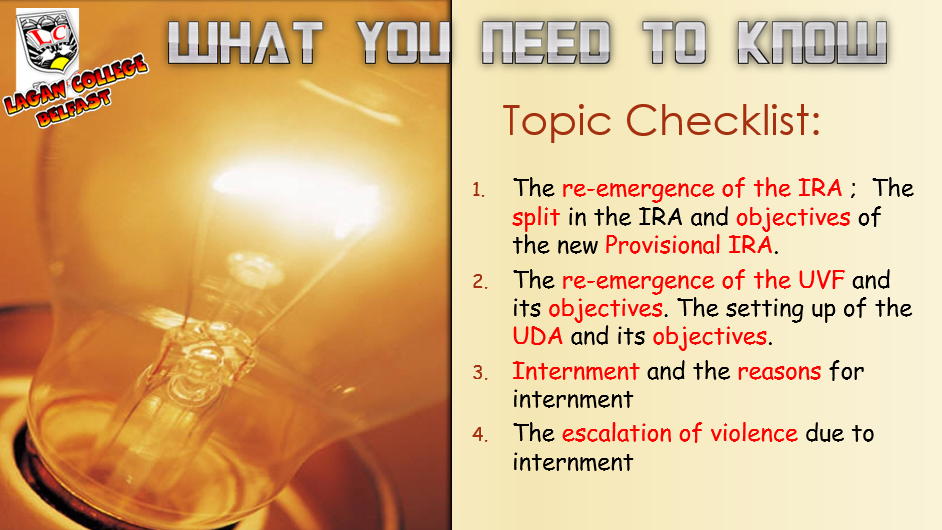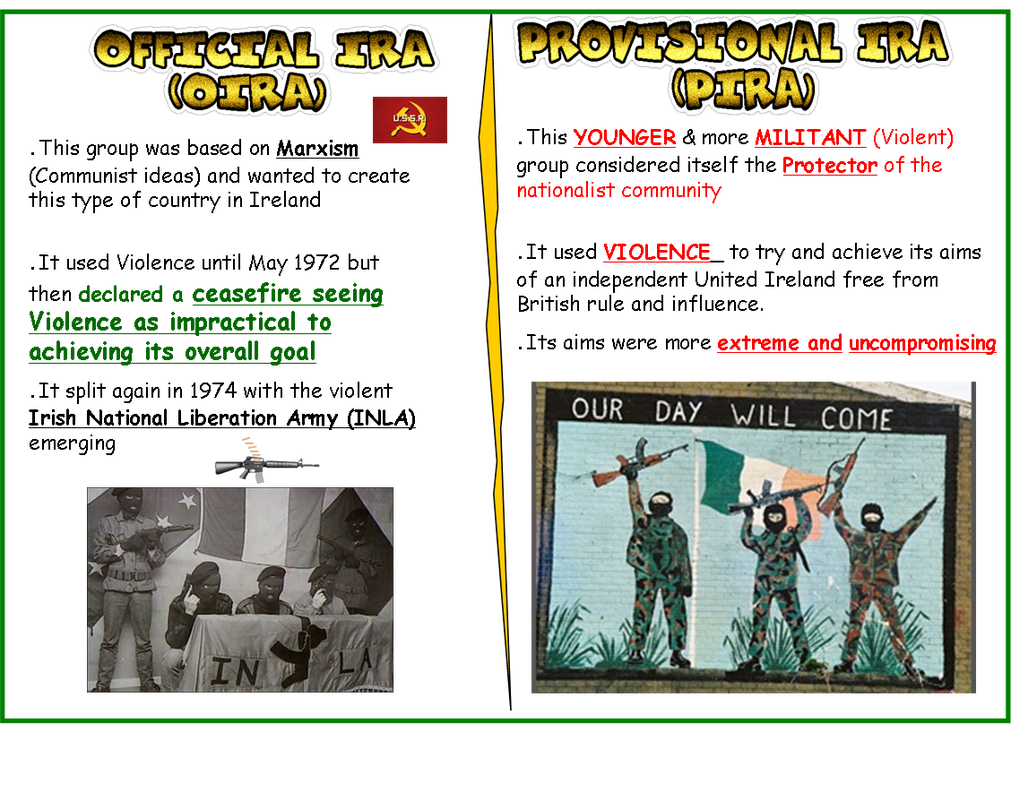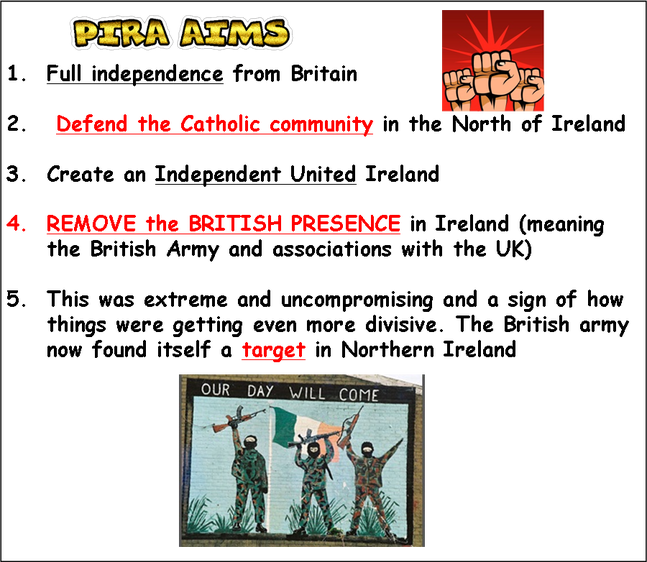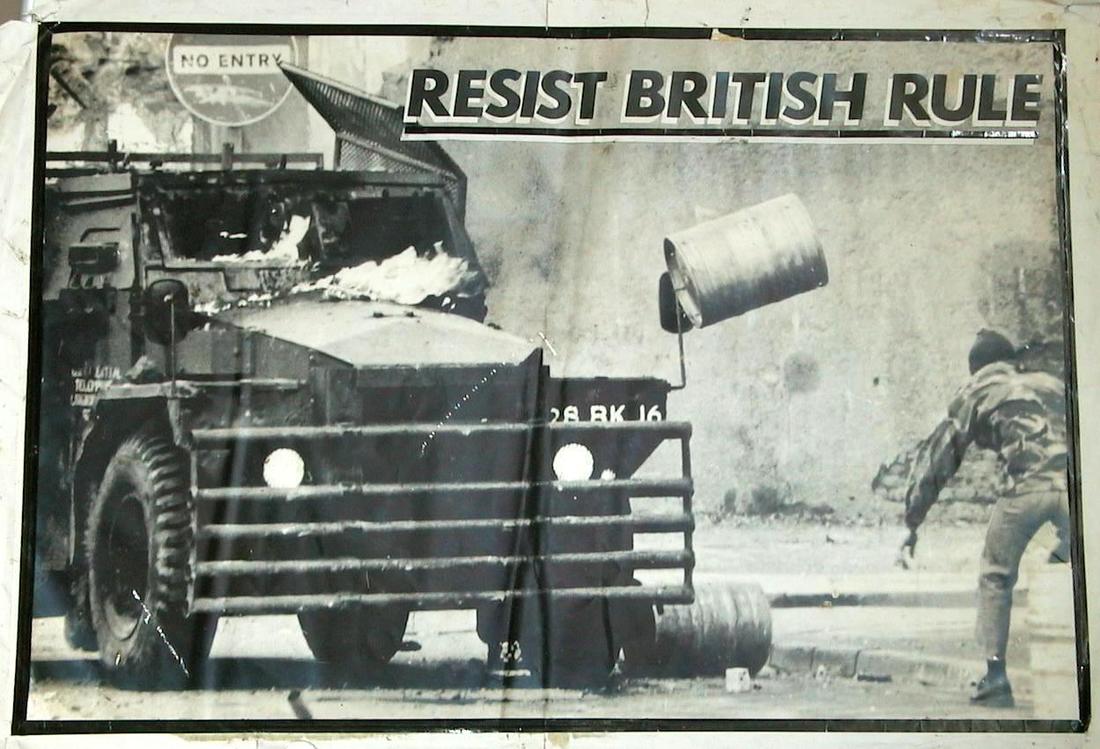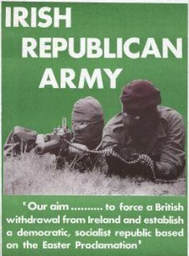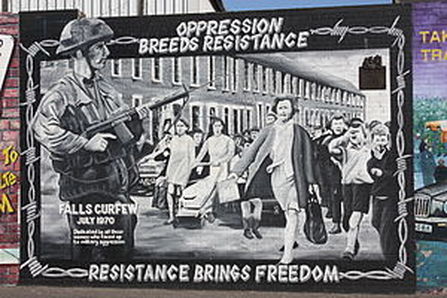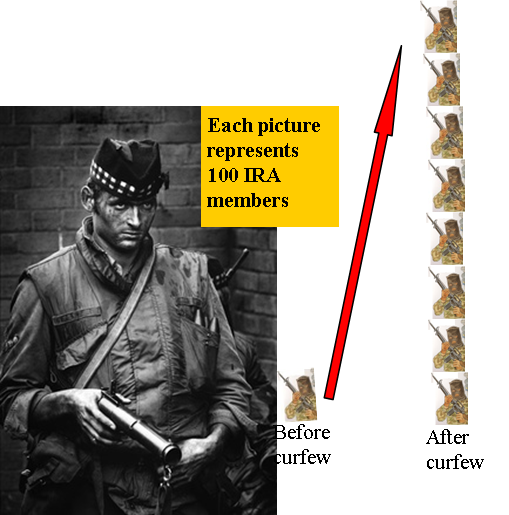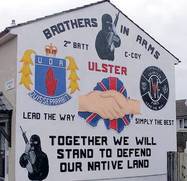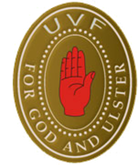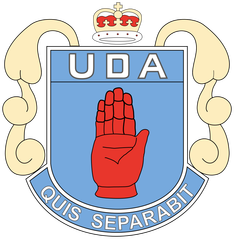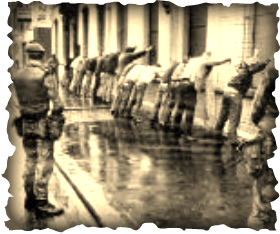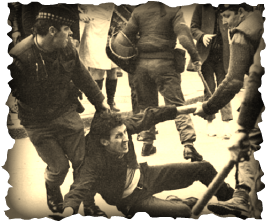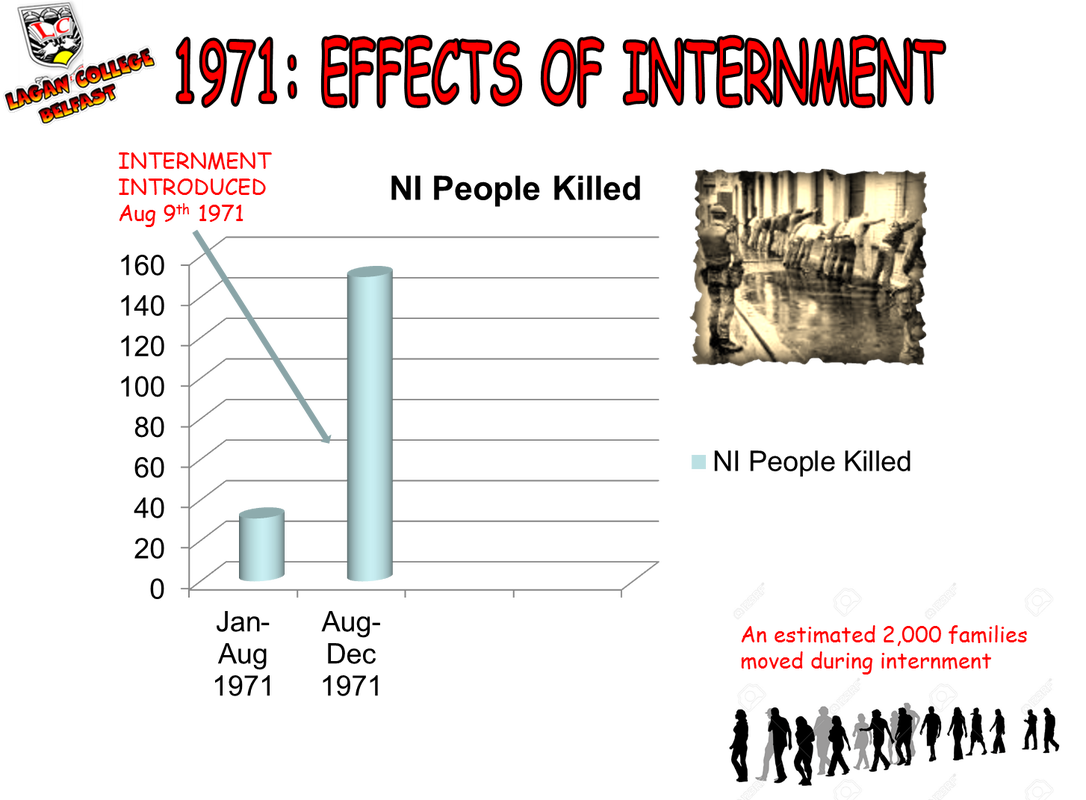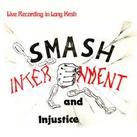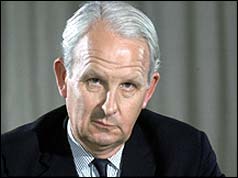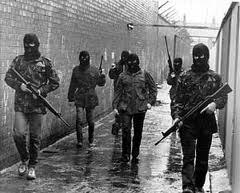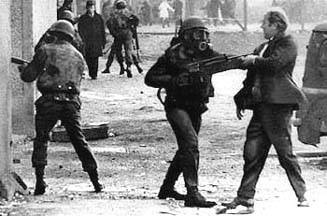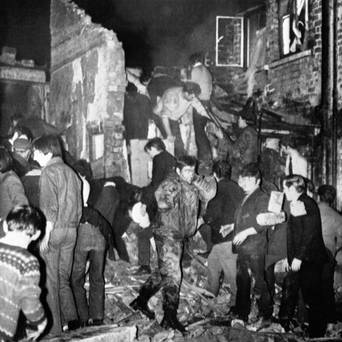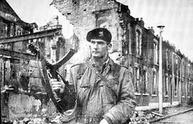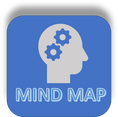THE IRA REACTION OF THE SUMMER OF 1969
The IRA (IRISH REPUBLICAN ARMY) was a Republican Paramilitary group set up to fight for a United Independent Ireland free from any form of British rule. It was prepared to use violence to achieve this believing it was the only way to get the British presence out of Ireland. The IRA fought a BORDER CAMPAIGN: A bombing campaign around the border areas of Northern Ireland in the 1950's. It was unsuccessful as it had little support from northern Catholics who were more interested in civil rights than Irish unity and the use of violence to achieve it. In the late 1950's the IRA called off its armed campaign and put away its arms. It became more focused on Marxism (Communism)
The emergence of violence and the attacks on mainly Catholic communities in Belfast saw the IRA made fun of by nationalists who saw their community as undefended. Slogans were dobbed on walls: 'IRA : I RAN AWAY'
The emergence of violence and the attacks on mainly Catholic communities in Belfast saw the IRA made fun of by nationalists who saw their community as undefended. Slogans were dobbed on walls: 'IRA : I RAN AWAY'
THE SPLIT IN THE IRA AND EMERGENCE OF THE PROVISIONAL IRA
Younger members of the IRA were deeply frustrated about the inaction of the IRA and its leadership. It was not interested in Marxism but armed republicanism and the goal of achieving a United Ireland by force. It led to an eventual split in the IRA in 1970.
THE SPLIT:
THE PIRA ARMED CAMPAIGN
As sectarian violence became worse so support for the PIRA increased. Many Catholics joined up seeing it as their duty to protect the Catholic communities under attack. They targeted Police Officers and British Soldiers in bombing and shooting attacks. They also bombed 'economic targets' shops and businesses causing a great deal of injury death and destruction. Many of the businesses affected were Protestant owned.
PIRA AND THE BRITISH ARMY
|
It must be remembered that the British army were initially warmly welcomed into nationalist areas in August 1969. They stopped the violence against the Catholic Communities. They were much more trusted at that stage than the RUC and they seemed to be the protectors of nationalist communities against police and loyalist attacks.
However, the army was soon in an impossible position: PIRA was in no way interested in achieving simply civil rights. Its goal was an independent United Ireland which it was prepared to achieve by force through destroying 'the British presence in Ireland.' This meant that one of its goals was to target and kill members of the British army. The violence up until this point had been the achievement of Civil Rights. However, it began to now concentrate on the future of Northern Ireland. The British army found itself uncomfortably in the middle of two warring communities - unwilling peace keepers in a war it knew little about. |
|
The army responded to PIRA attacks by searching homes in nationalist areas for weapons.
In July 1970 the British army closed down the whole area around the Falls road area - a nationalist area of West Belfast. They imposed a 36 Hour curfew as they searched homes for weapons. This was known locally as the Rape of the Falls. Some weapons and ammunition were recovered in the searches however, it was a political disaster |
RESULTS OF THE FALLS ROAD CURFEW
- The British army's previously good relationship with the nationalist community was severely damaged. They were now viewed as the aggressors and the enemy and part of the Unionist/ loyalist state.
- PIRA membership shot up 8 fold from 100 to 800 members
PROTESTANT REACTIONS TO THE VIOLENCE
Among the Protestant / Loyalist / Unionist community the PIRA campaign only convinced them that Catholics would never be satisfied until they achieved a United Ireland. This led to the re-emergence of Loyalist paramilitary groups such as the UVF (Ulster Volunteer Force) They began to use IRA style tactics of bombing and shooting to defend the Union from the IRA.
PROTESTANT PARAMILITARIES
UVF (ULSTER VOLUNTEER FORCE)
|
This organisation dated back to 1913 and the Home Rule Crisis. By the 1960's it had re-emerged to deal with the perceived threat from the civil rights movement. It felt that the Civil Rights movement was simply the IRA in disguise and a way of achieving a united Ireland by stealth. The UVF aimed to counter any Nationalist threat and protect the Protestant community.
|
UDA (ULSTER DEFENCE ASSOCIATION)
|
This organisation was set up in 1971 as the IRA campaign began to expand. Its aim was to protect the Union with Britain by whatever means possible and to protect the Protestant community. It became a huge organisation with up to 30,000 members. It was so large in fact that the Government could not ban it. The prospect of 30,000 potential prisoners and the potential trouble they may cause on the streets was too much.
The UDA were responsible for many murders in Northern Ireland. One famous one was the bombing of McGurks bar in 1971. 15 people were killed in this explosion. |
|
In August 1971 Brian Faulkner took over from Chichester Clark as Northern Ireland Prime Minister.
Many people felt Faulkner was the best man to bring the violence to an end. He appeared a lot more professional and had grass roots Unionist support. He also knew the Unionist community especially wanted a tougher security policy in response to the increased violence. Faulkner's first aim was to reduce the violence and then find some form of political solution. To do this he decided to use a successful measure from the past which was part of the Special Powers Act. This was was INTERNMENT - which basically meant suspected terrorists were arrested interrogated and imprisoned without trial This was tried out on 9th August 1971 in Operation Demetrius. It was used with the reluctant support of the British army- who questioned the intelligence provided - rightly as it turned out. WHY WAS INTERNMENT SUCH A DISASTER?
|
|
1) NATIONALIST ANGER They . A The arrest without trial of so many nationalists and no loyalists, yet again, deeply angered an already mistrustful community.
They felt further alienated from the 'State' of Northern Ireland and felt that British soldiers were again doing the Unionist governments dirty work. This had been aimed at Republican paramilitaries but really ended up hurting nationalist communities. The moderate SDLP withdrew their members from Local government in protest. They also called for a Rent and Rates strike. CIVIL RIGHTS MARCHES started up again in protest. A protest march at Maglligan beach in January 1972 was met with violence -CS gas and baton charges by the army. |
2) UNIONIST DIVISIONUnionists, to begin with, reacted positively to internment. Many felt they were tough but that they were the only measures to bring the trouble to an end.
However, slowly many began to realise that the lack of weapons or any real suspects from the operation and the level of nationalist anger had been a huge mistake and was actively driving nationalists towards the IRA. Faulkner found his position severely weakened by the failure. He conceded that it had been a failure but suggested most of the key people had 'escaped the net' The British Government had regarded internment secretly as 'Stormont's last chance' They began to realise they would soon have to intervene - directly. |
3) GROWTH OF SUPPORT IN THE IRANot only did internment fail to catch the hoped for leadership of the IRA, it actually boosted support for the organisation enormously. Many disaffected Catholics turned to it based on the issue of internment. The IRA itself set out to demonstrate it was not beaten, by a bloody campaign of terror and bombing which killed scores of people and made 1971 the bloodiest year in the Troubles to that date.
|
4) THE ARMYThe use of the British army to arrest and capture 'suspects' again made it look to nationalists like a Unionist tool to keep control. Again it was stuck frustratingly in the middle.
The army lost over 40 men dead in the weeks after internment which was a big increase on anything previously There were signs however, that the British army was in fact toughening its stance in the face of increased opposition. An anti internment march on MAGILLIGAN BEACH was met by a strong army response and the use of CS gas. |
5) LOYALISTS
|
6) VIOLENCE
This mind map covers the whole INTERNMENT topic - Click on it to download the PDF. Use this to understand and revise this topic
|
|
|
|
|
|
© J Wishart / Rita Morgan 2017-20
